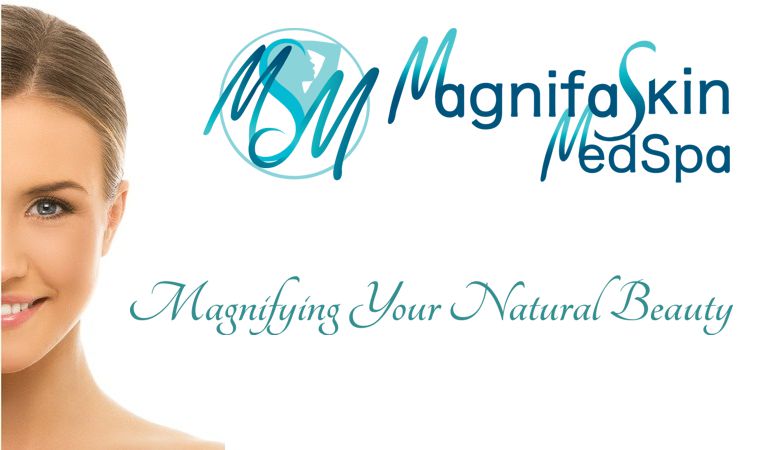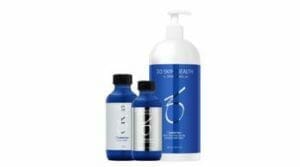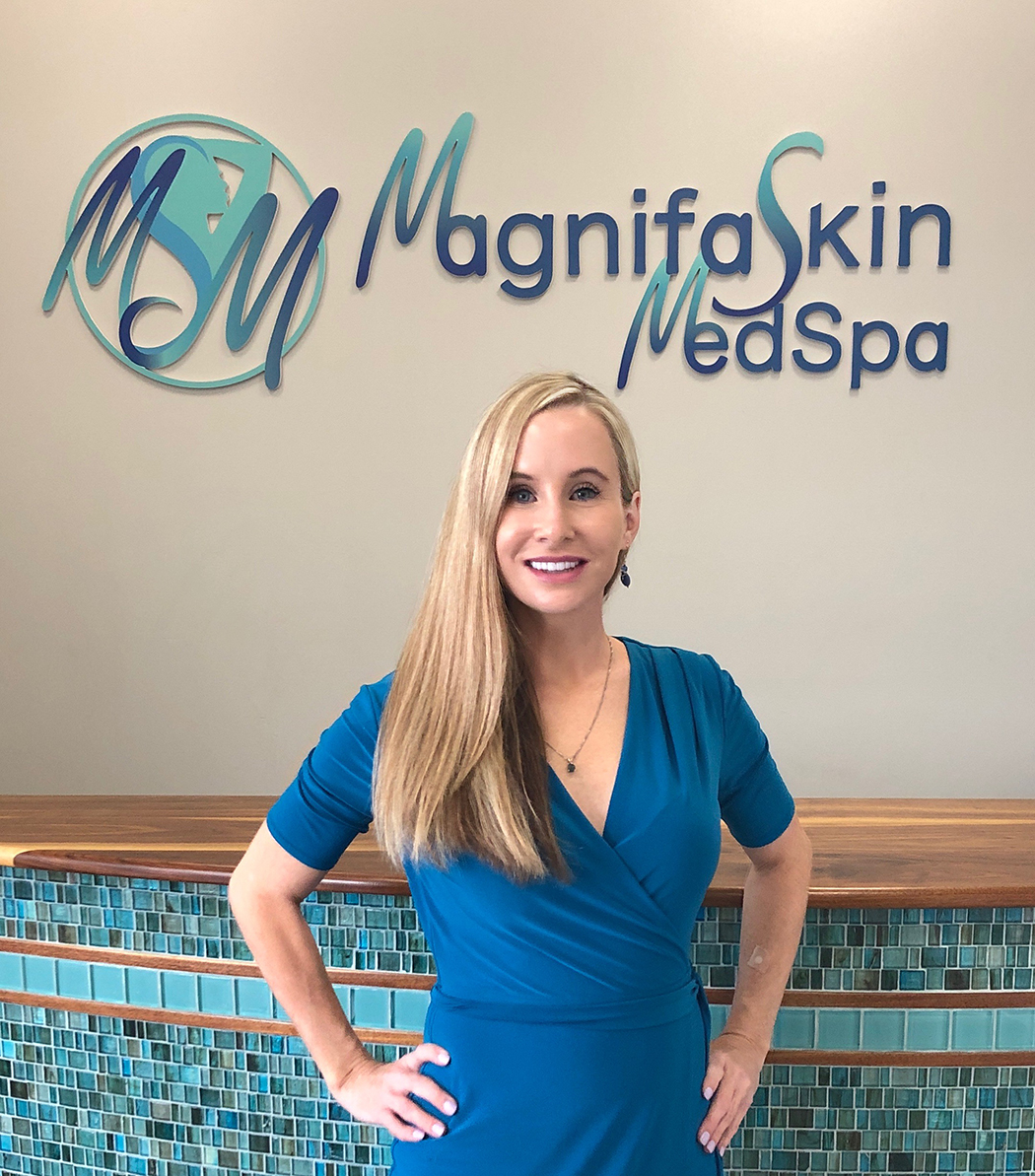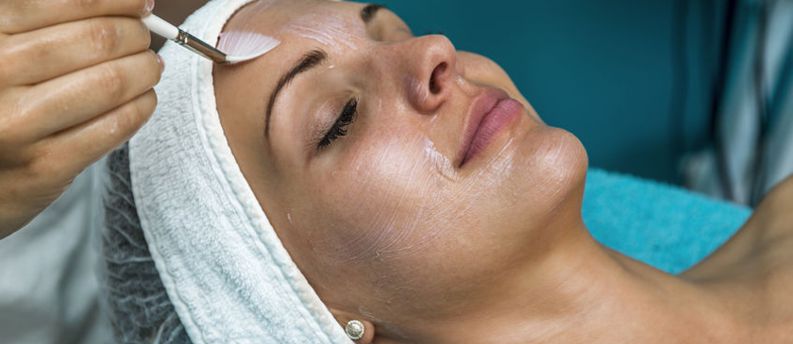
Peels vs. Facials: Part 2 of 3 – Chemical Peels

You might remember Samantha’s misadventure with a chemical peel from Sex and the City. This was comedy. With a professional chemical peel you can expect some redness, but you won’t look like a burn victim.
Some people are a little scared of the idea of a chemical peel. If you were a fan of Sex and the City, you may remember Samantha’s misadventure. Of course, that was television and the side effects were greatly overstated for comic purposes. Nevertheless, you may have the idea that a chemical peel will leave you with beet-red skin for days afterward. This simply isn’t true. Today’s chemical peels, when applied by a professional who has properly assessed your skin type, will likely result in some temporary redness of your skin, but it will be minor and fade within a few days. The type of peel you get: mild, moderate, or deep is also a large factor in appearance and healing following the procedure. More about the different types of peels in next week’s post.
The second reason some people fear a chemical peel is the ‘C’ word. Yes. Chemical. Ewww. Chemicals on your skin! How can that be natural or healthy? But the word ‘chemical’ just means any substance consisting of matter (atoms and molecules) which can’t be broken down except by breaking chemical (molecular) bonds. By this definition, water is a chemical. So, yes, chemicals can be entirely natural and healthy. The word just gets a bad rep from often being used to describe harmful chemicals, without any qualifiers as to what kind of chemicals we’re actually talking about. It probably doesn’t help that chemical peels are sometimes called acid peels. But the ‘acids’ involved are very mild and largely consist of naturally occurring compounds. They are also the active ingredient that make chemical peels work.
So now that we know that chemical peels A) can be entirely natural and healthy, and B) won’t leave us looking like a cooked lobster, what do they actually do? And what is the benefit of a chemical peel over a salon facial?
Chemical Peels: What They Do
Chemical peels can be applied not only to the face but also to the neck and hands. The skin on these areas of our body is constantly exposed to the elements, and as such, more susceptible to aging. Dead skin cells build up in the top layer of our skin as a result of this exposure and cover the healthy glowing skin underneath. A chemical peel completely removes this top layer of skin, which is a mixture of some healthy cells and a large number of dead or dying cells. Once this layer is removed, the baby-fresh healthy skin underneath is revealed.
Any or all of the following benefits may result:
- Reduce fine lines
- Smooth wrinkles
- Improve the appearance of mild scars
- Reduce acne
- Reduce the appearance of age spots, freckles and melasma
- Smoother, plumper skin
- Brighter skin
- A healthy and youthful glow
Where the effects of a salon facial may last up to 72 hours, the benefits of a chemical peel can be seen for up to two months.
Chemical Peels: The Process
A much simpler procedure than a facial, which has up to 8 steps, a chemical peel has only 3, although the results are much more dramatic.
Consultation
An esthetician will examine your skin closely and likely ask you a number of questions about your overall health. This may include your exercise regimen, allergies, daily skin care and any past issues you may have had from skin treatments. You’ll also be advised that if you’ve used Retin-A, Differin or any other product containing tretinoin in the past 7 days a chemical peel may not be advisable. If you use these products, you should stop using them one week prior to your peel.
They will also discuss your goals with you. What do you want to get out of the peel? How long can you afford to take for recovery? How often are you prepared to get repeat treatments? All of these are factors in determining the right peel for you.
Cleansing
A deep exfoliating cleansing will be performed prior to applying the peel. It’s important to remove any traces of makeup, moisturizers, creams, dirt or oils on your skin as these will not only interfere with the effectiveness of the peel, but the chemicals in some of these substances may interact with the peel, with unpredictable results.
The Peel
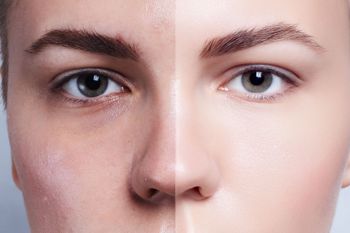
The results of a chemical peel. You can expect smoother skin, reduced appearance of lines, wrinkles, hyperpigmentations and acne as well as brighter skin with a healthy glow.
First, your esthetician will perform a spot test. A small amount of the peel will be applied to your forearm or on the side of your neck just below your ear, at the hairline. The solution will be left on for a minute or two to be sure you are not allergic.
After applying a protectant around your eyes and lips, the peel will be applied with a Q-tip-like applicator. Depending upon the peel, multiple layers may be required. The peel chemicals that you are breathing in may make you light-headed for a while but they are not toxic and won’t hurt you. If you do experience any light-headedness you may be advised to drink lots of water and not drive until it passes, which it should within minutes to hours, depending upon how sensitive you are to the chemicals.
With some peels you should expect a burning sensation for the first minute or two but this will quickly fade. The sensation is often compared to getting a sunburn. Your esthetician will use a fan to reduce the sensation of heat. Expect your skin to turn red during this time, but the redness is temporary.
The Healing Process
Day 1 and 2
During the healing process, which, with a medium peel such as Jessner, VI or ZO will take a few days, you should expect to feel your skin gradually tightening before it begins to peel. You may have the weird sensation that you are wearing a tight mask. You will likely be advised to wash your face up to five times per day with a gentle cleanser such as Cetaphil, rather than soap. Expect your skin to be somewhat red during this time (think sunburn, not lobster!) and it may also feel slightly swollen, although likely it will appear normal other than the redness.
Day 3 and Beyond
For most people, you’ll notice your skin beginning to peel about 48 hours after the procedure and by day 4 you should be seeing the top layer peeling and curling in larger sections. It’s very important not to pull the skin off! I know. You’ve all seen photos of skin being peeled off following a chemical peel but this is marketing. Don’t peel! Let it come off on its own. You can trim the dead skin with scissors but be careful not to pull on any parts that are still attached.
Cleaning Up
A facial may be recommended one week following your peel. This will remove any remaining dead skin. By two weeks following your treatment you should expect to have fully healed with visibly younger looking skin.
The Final Result
Expect smoother skin with smaller pores, a healthy glow, reduced appearance of scars, freckles, and other hyperpigmentations. This effect can last for up to two months.
While this post has been part 2 of 2 about chemical peels vs facials, it is also part 1 of 2 about peels. Next week we’ll explore the different types of peels as well as the science behind chemical peels.
Our Peels
We offer peels from VI, Jessner and ZO. Click the images below for more information.
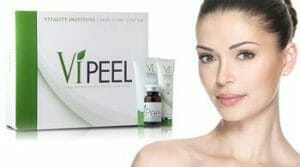
VI Peel is a gentle mid-depth yet powerful medical-grade chemical peel for scarring, fine lines, wrinkles, sun spots and oil balancing.
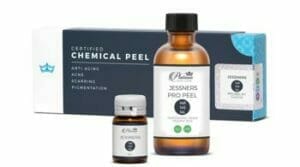
Jessner’s solution is a combination of three chemicals: resorcinol, lactic acid, and salicylic acid. This peel is a reliable, safe peel for rejuvenating sun damaged skin and helping diminish the appearance of lines, wrinkles, acne scarring and hyperpigmentation.

Be the first to know about new Specials, and blog posts with valuable free information on skin care, beauty and wellness. Sign up below and you'll receive an email notice of new specials as well as new posts. You can unsubscribe at any time.

